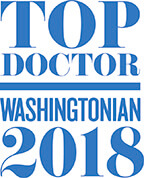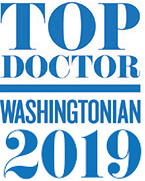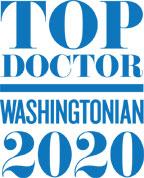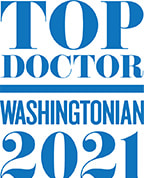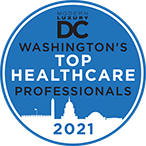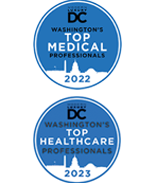Author: Robert P. Friedlaender, M.D., See Clearly Vision
Treatment of POAG
There is no known cure for glaucoma. However, the goal of treatment is to preserve the patient’s existing visual field. Reducing IOP is the only proven method for stopping the progression of optic nerve damage and related field loss. Reduction of IOP by at least 30% is believed to be necessary. Normal IOP ranges from 10 to 21 mmHg. There are, however, usually small fluctuations in IOP of about 4 mmHg, up or down, throughout the day.
Successful treatment of glaucoma is accomplished with the use of anti-glaucoma medications in the form of an eye drop, ophthalmic gel, or pills; often times the various modalities are used in combination. If proven ineffective in reducing IOP adequately, medications may be followed by laser treatment. The effect of laser treatment in lowering IOP is often successful. In the event the laser treatment proves ineffective, there are other, more invasive surgical procedures that can be performed.
Medications
The topically applied drops and gels for treatment of POAG are used to reduce the production of aqueous fluid in the eye, and/or to increase the outflow of aqueous fluid from the globe. This reduction in fluid will thereby cause the IOP to be lowered. Medications for POAG are tolerated well by most patients, but they may have associated side effects, both locally and systemically. Locally applied eye drops and gels can cause toxic or allergic reactions of the eyelids, conjunctiva and cornea, with redness, swelling, foreign body sensation, and itching. Also reported are changes in iris color and skin of the eyelids and lashes. These eye drops and gels can also cause systemic side effects that can include respiratory symptoms (specifically the exacerbation of asthma), cardiac symptoms (increase in heart muscle conduction defects), lethargy, and even personality changes. Oral agents used to treat POAG are a group of medicines termed Carbonic Anhydrase Inhibitors. They can cause generalized weakness, and numbness and tingling of the lips and extremities.
One of the biggest problems with medical treatment of POAG is poor compliance by the patient. Another problem is the patient who is frequently elderly may be unable, or unwilling to properly administer their medication. This may be due to limited mobility, lack of manual dexterity, intolerance of side effects, or forgetfulness.
There are various categories of topically applied anti-glaucoma medications. Each category has a specific mechanism of action. The more common categories include the following:
- Prostaglandin Analogues (e.g., Latanaprost/Xalatan, Travatan, or Lumigan);
- Beta Blockers (e.g., Timolol, Timoptic, Betoptic S, or Betagan);
- Carbonic Anhydrase Inhibitors (e.g., Trusopt or Azopt);
- Adrenergic Agonists (e.g., Alphagan-P or Iopidine);
- Cholinergic Agents (e.g., Pilocarpine or Pilopine).
There are also some popular eye drop solutions which represent combinations of different medicines (e.g., Cosopt or Combigan). Occasionally, medication is given systemically, most notably in pill form, to lower eye pressure. The medication Diamox has a diuretic effect.
While reports in the popular news media have publicized the positive effect of marijuana, as well as alcohol, on the lowering of IOP, their effect is relatively weak compared to that of the established prescription medication.
Surgical Treatment
Laser treatment is sometimes recommended early in patients with severe side effects from medications, or that have been known to have poor compliance. Invasive surgery glaucoma surgery is performed as a last resort. It is termed trabeculectomy and is performed to relieve the pressure in the eye so that the IOP can be reduced. There are occasions when the insertion of a tiny tube or mechanical valve is recommended to redirect fluid in the eye. The goal of these procedures is always to create an opening in the wall of the eye, which does not close, and which creates an unobstructed path for the aqueous fluid to drain out of the globe.
As a last resort in a nearly blind eye, to avoid pain, a procedure can be done to destroy the ciliary body, the part of the eye that produces aqueous production. This is done by way of directly invasive surgery, or the application of freezing or heat energy.
Use of a laser or invasive surgery to treat POAG can cause premature cataract formation, and/or a dangerously low or high IOP. Invasive surgery can result in post-operative infection, and even retinal complications.
Work Up and Monitoring of POAG
After baseline evaluation, which includes a complete eye exam, IOP measurement, central corneal thickness (CCT) measurement, and baseline computerized visual field testing, patients with POAG are generally monitored as follows:
- IOP checks every 3 to 6 months;
- Computerized visual field testing (Automated Perimetry) every 6 months to 12 months
- Stereoscopic color photographs of the optic nerve discs;
- Computerized imaging studies, which provide a topographic map of the optic disc for quantitative measurement and comparison over time. These imaging techniques are accomplished with machines such as an HRT, GDX, or the newer OCT.
Conclusion
Prognosis in Primary Open Angle glaucoma (POAG) is generally good if it is diagnosed early, and intra-ocular pressure (IOP) is controlled. An attempt is made to determine the rate of progression of the optic nerve damage. The goal is to halt optic nerve damage, while avoiding undue side effects of treatment.

